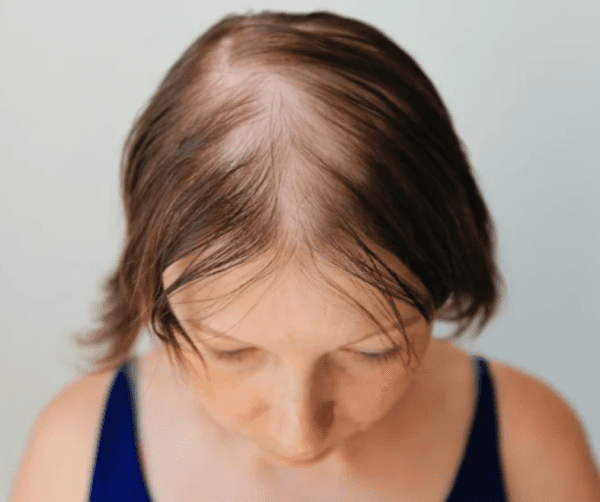
For a very long time, dreadlocks have represented style, personal expression, and cultural heritage. However, the choice to wear dreadlocks might cause anxiety for those who are experiencing hair loss due to its potential effects on hair health. Dreadlocks and thinning hair have a complicated interaction that needs to be carefully considered to preserve style and hair health.
Hair Thinning and How It Affects Dreadlocks
Thinning hair, a condition affecting both men and women, can stem from various factors such as genetics, hormonal changes, stress, poor nutrition, or hair-styling practices. It involves a gradual reduction in hair density, often leading to visible scalp exposure and weakened hair strands. This condition can raise valid concerns for those contemplating dreadlocks as a chosen hairstyle.
Dreadlocks and Thinning Hair
Opting for dreadlocks when experiencing thinning hair can be a decision that requires careful attention. The weight of dreadlocks, the tension applied during their creation, and ongoing maintenance may exacerbate existing hair-thinning issues. The potential stress on already weakened hair follicles could lead to further breakage or hair loss.
Precautions and Considerations
Before embarking on the journey of dreadlocks with thinning hair, individuals should consider several crucial factors:
1. Consultation with a Professional: Seeking advice from a hair care specialist or a trichologist can provide valuable insights into the condition of your hair and scalp. They can offer guidance on whether dreadlocks are suitable and how to proceed without compromising hair health.
2. Gentle Handling: Gentle maintenance and handling of dreadlocks are essential. Avoiding excessive tension during their creation and regular maintenance sessions is crucial to prevent additional stress on fragile hair.
3. Proper Hygiene and Care: Keeping the scalp and dreadlocks clean is vital to prevent potential infections or buildup that could affect the scalp’s health and exacerbate hair thinning.
4. Size and Weight of Dreadlocks: Opting for smaller or lighter dreadlocks can reduce the strain on the hair follicles. Larger, heavier dreadlocks can exert more pressure on the scalp and hair, potentially worsening thinning issues.
5. Balanced Hair Care Routine: Implementing a balanced hair care routine that includes proper moisturizing, minimal use of chemical products, and regular conditioning can help maintain the health of both the hair and scalp.
Frequently Asked Questions About Hair Thinning and Its Impact on Dreadlocks
Maintaining healthy dreadlocks involves a combination of proper techniques, regular care, and attention to your hair’s unique needs. If you have concerns about thinning or any other issues, seeking professional advice is a proactive step toward ensuring the longevity and health of your dreadlocks.
1. Why is my hair thinning with dreadlocks?
Hair thinning with dreadlocks can result from various factors, including tension, excessive weight, or improper maintenance. Constant pulling and tight hairstyles can contribute to stress on the hair shaft, leading to thinning over time.
2. Can dreadlocks cause permanent hair thinning?
In some cases, if dreadlocks are installed and maintained improperly, they can contribute to permanent hair thinning. It’s essential to follow proper maintenance practices, avoid excessive tension, and give your hair regular breaks.
3. How can I prevent hair thinning with dreadlocks?
To prevent hair thinning, ensure your dreadlocks are not too tight, practice gentle maintenance, and avoid excessive manipulation. Regularly moisturize your scalp and hair to maintain overall hair health.
4. Is it normal to experience shedding with dreadlocks?
Some shedding is normal as hair goes through its natural growth cycle. However, if you notice excessive shedding or thinning, it may be a sign of underlying issues that need attention.
5. Can thinning hair be a sign of an underlying health problem?
Yes, thinning hair can be indicative of various health issues, such as nutritional deficiencies, hormonal imbalances, or medical conditions. If you notice significant changes in your hair, it’s advisable to consult with a healthcare professional for a thorough evaluation.
6. Does the length of my dreadlocks affect hair thinning?
Longer and heavier dreadlocks can exert more tension on the roots, potentially contributing to thinning. It’s crucial to strike a balance between the desired length and the weight your hair can comfortably bear.
7. How often should I wash my dreadlocks to prevent thinning?
The frequency of washing depends on your hair type and personal preference. However, keeping your scalp and locks clean is essential for overall hair health. Opt for residue-free shampoos and avoid overwashing, which can strip the hair of natural oils.
8. Can hair thinning be reversed with proper care?
In some cases, improving hair care practices, addressing underlying health issues, and giving your hair a break from tight hairstyles can contribute to regrowth and improved thickness. However, individual results may vary.
9. Are there specific hairstyles that can help prevent thinning with dreadlocks?
Styles that distribute weight evenly and avoid excessive tension, such as loose updos or braids, can help prevent thinning. Avoid consistently wearing styles that pull on the roots tightly.
10. When should I seek professional help for hair thinning with dreadlocks?
If you notice persistent or severe hair thinning, it’s advisable to consult with a professional hairstylist or a dermatologist. They can assess your hair health, identify potential issues, and provide personalized recommendations for care and maintenance.
Conclusion
It is feasible to combine personal style with hair health, even though choosing to wear dreadlocks with thinning hair requires careful deliberation. Professional advice, careful handling, and conscientious care can reduce hazards and enable people to enjoy their chosen style without sacrificing the health of their hair.
In the end, taking care of one’s hair health and appreciating one’s individual style should go hand in hand. People can prioritize the health of their hair and rock their dreadlocks with confidence if they give them the right care and attention.

Leave a Reply